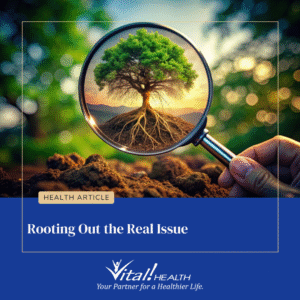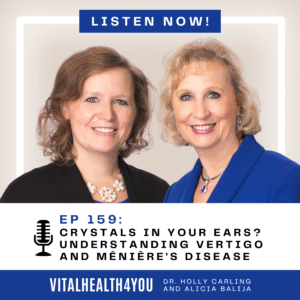![]() Part I
Part I
Amongst the many things I enjoy doing, flying is one of them. As an instrument-rated pilot, we have to have our attention in many different directions at the same time. If you’re not good at multi-tasking, don’t try to fly an airplane! Flying an airplane and flying around the hormones – or endocrine system – have many things in common.
In the cockpit, we have a lot of instruments, but the most important 6, frequently referred to as the “six pack” is where the greatest of our attention continually is. We are constantly scanning this six pack – we look at the gauge, interpret what it’s telling us, put in an input (add more or less power, turn a certain way, change our rate of climb or decent, etc.). It is a constant scan, interpret, act. Of course, the larger airliners have most of this automated now, but us little guys still have to do it the old-fashioned way.
How does this relate to hormones? In more ways than you can imagine. Let’s take a look at our six – pack. Our hormonal system is a complex system. Our incredible instruments, our glands, are continually monitoring hormonal levels and making adjustments accordingly – more hormones, less hormones, or different hormones.
The endocrine system is comprised of several organs or glands that produce a hormone – sex/reproductive hormones, “happy hormones” in the brain, hormones that monitor blood sugar levels, inflammation, blood pressure, sleep, pain, temperature control – the list goes on. In fact, there are approximately 50 hormones, all tuned in to receive complex messages. Hormones are the chemical messengers relaying information back and forth between the organs and glands that regulate function.
The first instrument in our airplane’s six-pack is the altimeter. This gauge tells us how high we are flying. Knowing how high you are flying can make the difference between crashing into the side of the mountain or flying so high that oxygen is no longer available and you just go to sleep, never to reawaken. Pretty important little gauge! We have glands that give us similar information. For example, cortisol when elevated can cause depression, and brain chemicals and hormones such as serotonin, endorphins, oxytocin and dopamine can regulate moods. How high or low you are, are dependent upon the interaction of some pretty awesome feedback mechanisms.
Our plane also has an airspeed indicator that lets us know how fast we’re flying through the air. Some of our stress hormones, such as epinephrine, norepinephrine, and blood sugar hormones such as growth hormone, insulin and cortisol regulate our get up and go.
How fast we climb or descend is dependent upon certain hormones, most of which come from the thyroid and adrenals – such as T3, T4, and the pancreatic hormones. This is akin to the Vertical Speed Indicator in our airplane.
Next is our Attitude Indicator. Most can say that people with hormonal issues need an attitude adjustment! This instrument is a gauge of how level we are. Are our wings straight and level? Is our nose pointed in the right direction – flying level, climbing or descending. Melatonin, produced by the pineal gland is a hormone that regulates sleep. I think any one with sleep deprivation can attest to how their sleep affects how level they feel. The hypothalamus and pituitary glands release hormones that are key to regulating internal balance, or homeostasis.
Other gauges include the Heading Indicator, Turn Coordinator and some additional instruments also pretty critical, such as a magnetic compass, but I think you get the point.
Why do I bring all this up? Because hormones fly our plane. There is a constant sensitivity to changes in the body that stimulate or inhibit responses in a dynamic feedback loop. Every gland has to do their job. Every gland has to be in a state of constant vigilance. Continually sensing changes, interpreting them, and responding to them, just like our six pack.
What happens when they don’t? We crash. How we respond to this crash is the essence of this article – it will be discussed in part two of Flying Around our Hormones.
Part II
In Part I of Flying Around the Hormones we likened our hormones to flying an airplane. Our instrument panels’ critical “six pack” of gauges tell us how high we’re flying (Altimeter), how fast or how slow we are going (Airspeed Indicator), how level we are (Attitude Indicator), how fast we are climbing or descending (Vertical Speed Indicator), where we’re heading (Heading Indicator) and how coordinated we are when we are changing directions (Turn Coordinator). All of these gauges are critical if we want to fly without crashing. It is the same with our hormonal system.
Our hormonal system, a.k.a. our endocrine system, is comprised of organs and glands that release hormones that tell us which direction we’re going and make sure we go where we want. It is a delicate feedback loop, that can really go askew and get “lost” if all glands are not on top of things.
When one part isn’t doing its part in this delicate flight, how we respond to it is so important, that if we don’t get it right we will crash. As our glands get tired and aren’t so vigilant, many people mistakenly give it a little extra push. We call it “Hormone Replacement Therapy” or “HRT”. What gets neglected or forgotten is that with that little push, that extra freebie hormone, comes a response from many of the other glands in this delicately coordinated movement. They respond by either amping up their hormonal release, or by tapering back. Because they do that, their other cohorts also must dump more hormone or hold back in response. And because those hormones do that, others do the same and the cycle goes around and around.
Newest to this launch of giving our lazy glands a foot up is “bio-identical hormones”. As much as they sound like they are the same as the ones we produce, they aren’t. We can put the wrong octane gasoline in an airplane engine that is “close” to the right stuff, but that error can cost lives. When we give freebie hormones, the gland almost always will respond by tapering back its own production. But not putting out the right amount was the problem in the first place! By giving HRT hormones, aren’t we furthering the problem?
Now don’t get me wrong. I know people can feel so much better on them and swear by them. But is it the right thing to do? What happens when an organ continually tapers back on its own production? Your HRT dosages have to keep going up to compensate. Then this delicate biofeedback loop says “Oops! Looks like we’re over-producing again! Better shut down even more!” As smart as we are, we cannot duplicate it the way the body does and stay stable in this delicate give-and-take domino effect of a system.
The better approach is to find out what went wrong in the first place. Which organs or glands aren’t doing their part? Why not? What is missing that they need to get their “attitude” back up to par? Or, what is inhibiting them? Is it a liver that is over-loaded with toxins from the environment, medications, garbage foods or other things? Is it the pancreas that is so overloaded with sugar stimulation that it is becoming resistant to its life-sustaining hormones? Are the adrenals getting so tired that it can’t regulate the hormones critical for keeping inflammation or blood pressure under control? Who’s falling down on the job and why?
If you are enmeshed in this Russian roulette of HRT, there are ways you can get your hormones flying the straight and narrow path necessary for a safe landing.
©2018 Holly A. Carling, O.M.D., L.Ac., Ph.D.







